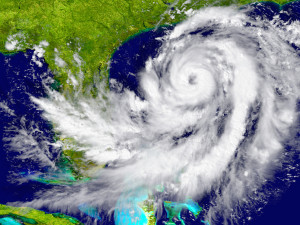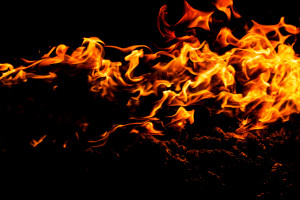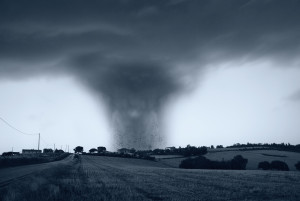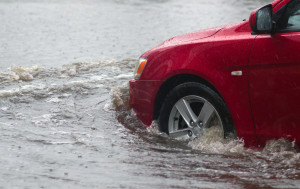This post is part of a series sponsored by CoreLogic.
A review of 2015 natural hazard events revealed an overall reduction in property damage for the year. While this does not minimize the local impact of individual events like the South Carolina flooding or the Valley and Butte Wildfires in California, it does provide an overview that indicates less extensive physical and financial damage due to natural hazards in 2015. Even though the calendar has turned the page to a new year and the annual accounting of disasters began again at zero, it hasn’t taken long for the numbers to begin to climb.
 The most surprising event during the first month of the new year was the formation of what would become Hurricane Alex on January 13. Although Alex only lasted a few days, it was an uncommonly early hurricane to form in the Atlantic Basin. Before this year, an Atlantic storm hadn’t occurred during the month of January since 19781. Even though Alex never made landfall and didn’t cause any damage, it was notable because of its early formation during a period of several years that had seen very little Atlantic hurricane activity. It also reinforces the notion that just because hurricane “season” officially begins in June and ends in November, doesn’t mean that hurricanes can’t form much earlier in the year.
The most surprising event during the first month of the new year was the formation of what would become Hurricane Alex on January 13. Although Alex only lasted a few days, it was an uncommonly early hurricane to form in the Atlantic Basin. Before this year, an Atlantic storm hadn’t occurred during the month of January since 19781. Even though Alex never made landfall and didn’t cause any damage, it was notable because of its early formation during a period of several years that had seen very little Atlantic hurricane activity. It also reinforces the notion that just because hurricane “season” officially begins in June and ends in November, doesn’t mean that hurricanes can’t form much earlier in the year.
Alternatively, wildfire “season” in the U.S. has been recently characterized as having  gone from specific times of the year to year-round. The number of wildfires to date in 2016 is less than half the average over the last 10 years, however it is similar to the number of fires that occurred during the first month of 20072. More specifically, the 10-year average for January wildfires is 2,215 per year compared with 877 fires in 2016 and 888 fires in 20072. That fact by itself is not necessarily an indication of what’s to come for the rest of the year. For example, January 2016 had about the same number of fires as January 2007, both of which are far below the 10-year average for January. However, 2007 ended as one of the more destructive wildfire years in California history, with the Witch and Harris Fires combining to damage more than 1,300 homes, so we can’t judge the total year by the first month of wildfire activity. Recent rainfall from El Nino in California may reduce the drought conditions in the state, but will also cause additional plant/fuel growth in the coming months. So, while this is likely to have a short-term positive effect on wildfire control, it could also lead to additional fuels that may contribute to future wildfire events.
gone from specific times of the year to year-round. The number of wildfires to date in 2016 is less than half the average over the last 10 years, however it is similar to the number of fires that occurred during the first month of 20072. More specifically, the 10-year average for January wildfires is 2,215 per year compared with 877 fires in 2016 and 888 fires in 20072. That fact by itself is not necessarily an indication of what’s to come for the rest of the year. For example, January 2016 had about the same number of fires as January 2007, both of which are far below the 10-year average for January. However, 2007 ended as one of the more destructive wildfire years in California history, with the Witch and Harris Fires combining to damage more than 1,300 homes, so we can’t judge the total year by the first month of wildfire activity. Recent rainfall from El Nino in California may reduce the drought conditions in the state, but will also cause additional plant/fuel growth in the coming months. So, while this is likely to have a short-term positive effect on wildfire control, it could also lead to additional fuels that may contribute to future wildfire events.
 Flooding, earthquakes and tornadoes have also been active in the first month of the new year. Florida, Mississippi and Alabama have all experienced EF2 tornadoes this year. An interesting note to the tornado activity is the geographic location of these events. Most people have a general idea of where “Tornado Alley” is located, and it does not include any of the three states listed above. While there is no doubt that other tornadoes will be paying a visit to the traditional “Alley” states in the center of the country later this year, it is generally now accepted that there are other tornado hotspots located across the country as well. Alabama, Mississippi and Florida residents will vouch for the fact that parts of these states also have recurring periodic outbreaks of severe weather that generate violent tornado events. As for earthquake activity, a 7.1 magnitude earthquake in Alaska, along with numerous lesser magnitude earthquakes in Oklahoma, have caused minimal damage but certainly have increased awareness of this hazard.
Flooding, earthquakes and tornadoes have also been active in the first month of the new year. Florida, Mississippi and Alabama have all experienced EF2 tornadoes this year. An interesting note to the tornado activity is the geographic location of these events. Most people have a general idea of where “Tornado Alley” is located, and it does not include any of the three states listed above. While there is no doubt that other tornadoes will be paying a visit to the traditional “Alley” states in the center of the country later this year, it is generally now accepted that there are other tornado hotspots located across the country as well. Alabama, Mississippi and Florida residents will vouch for the fact that parts of these states also have recurring periodic outbreaks of severe weather that generate violent tornado events. As for earthquake activity, a 7.1 magnitude earthquake in Alaska, along with numerous lesser magnitude earthquakes in Oklahoma, have caused minimal damage but certainly have increased awareness of this hazard.
Inland and coastal flooding has already caused damage to properties in 2016. Last year’s flooding was limited almost exclusively to freshwater inundation from rivers and flash flooding from excessive rainfall with virtually no hurricane-driven storm surge. Both the late January flooding along the east coast from Virginia to the New England area and the Mississippi River flooding earlier in the month that affected cities from St. Louis to New Orleans contributed to early-year damage to properties.
flooding was limited almost exclusively to freshwater inundation from rivers and flash flooding from excessive rainfall with virtually no hurricane-driven storm surge. Both the late January flooding along the east coast from Virginia to the New England area and the Mississippi River flooding earlier in the month that affected cities from St. Louis to New Orleans contributed to early-year damage to properties.
Gratefully, none of the events so far this year have resulted in the severe damage or extreme loss of life that any of these hazards are capable of doing. While that is partially due to the low magnitude of most of these events, it is primarily the result of the events’ locations. For example, if a magnitude 7.1 earthquake, large wildfire or an EF2 tornado occurs in a densely populated area, the aftermath would be different than if it occurred in a rural area. It has never been more important to know the risks associated with these hazards and to prepare for them. No one can say for certain if 2016 will be the year of more damaging hurricanes or higher magnitude earthquakes, but it should definitely be the year for knowing and preparing for the time when we have to deal with the return of more damaging hazards.
Sources:
- National Hurricane Center, Hurricane Research Division, 2016.
- National Interagency Fire Center, 2016.
© 2016 CoreLogic, Inc. All rights reserved.
About CoreLogicCoreLogic (NYSE: CLGX) is a leading global property information, analytics and data-enabled services provider. The company’s combined data from public, contributory and proprietary sources includes over 4.5 billion records spanning more than 50 years, providing detailed coverage of property, mortgages and other encumbrances, consumer credit, tenancy, location, hazard risk and related performance information. The markets CoreLogic serves include real estate and mortgage finance, insurance, capital markets, and the public sector. CoreLogic delivers value to clients through unique data, analytics, workflow technology, advisory and managed services. Clients rely on CoreLogic to help identify and manage growth opportunities, improve performance and mitigate risk. Headquartered in Irvine, Calif., CoreLogic operates in North America, Western Europe and Asia Pacific. For more information, please visit www.corelogic.com.

Topics California Catastrophe Wildfire Flood Mississippi Hurricane
Was this article valuable?
Here are more articles you may enjoy.



 Former Congressman Charged After Collision with State Trooper in Florida
Former Congressman Charged After Collision with State Trooper in Florida  USAA to Lay Off 220 Employees
USAA to Lay Off 220 Employees  Marsh McLennan Agency to Buy Fisher Brown Bottrell for About $316M
Marsh McLennan Agency to Buy Fisher Brown Bottrell for About $316M  Survey Shows Majority of Florida, California Homeowners Seeing Higher Insurance Costs
Survey Shows Majority of Florida, California Homeowners Seeing Higher Insurance Costs 

